Miner Room Ventilation CFD Simulation, ANSYS Fluent
$80.00 $40.00 Student Discount
- This project simulates a Miner Room Ventilation in ANSYS Fluent software.
- The geometry of the problem is designed in Spaceclaim then Meshed in ANSYS Meshing software with 1,530,586 cells.
- The turbulence of the air flow is simulated with RNG k-e model.
- The energy source in cell zone conditions is activated for the fans.
To Order Your Project or benefit from a CFD consultation, contact our experts via email (info@mr-cfd.com), online support tab, or WhatsApp at +44 7443 197273.
There are some Free Products to check our service quality.
If you want the training video in another language instead of English, ask it via info@mr-cfd.com after you buy the product.
Description
Description
This project simulates a Miner Room Ventilation in ANSYS Fluent software. A miner room is a specific area where equipment for mining bitcoin is kept. Such a facility is mostly used to store Bitcoin mining rigs, which are specialized computers made to carry out the intricate computations required to safeguard the Bitcoin network. Mining hardware generates a significant amount of heat, and controlling the temperature in the miner room is crucial.
In this project the mining room is divided into two parts, small and big rooms, in which the middle wall contains six fans that moves the hot air from the big room to small one. This process is a way to control room temperature so that the high temperatures doesn’t reduce the efficiency of mining rigs and leads to more frequent hardware failures.
The geometry of the problem is designed in Spaceclaim then meshed in ANSYS Meshing software with 1,530,586 cells.
Methodology
Since in this process proper airflow is essential, installing exhaust fans to circulate air and remove heat has been considered. The source term with 186,390.38 [W/m3] generated heat by the miners is defined as energy source in cell zone conditions for the fans, which means the fans are supposed to move this heat as a kind of ventilation.
Additionally the turbulence of the air flow is simulated with RNG k-e model and the simulation is done steadily. The air enters the domain via inlet with 34[m/s] velocity and 300 K temperature.
Results
The obtained contours clearly show how the hot air moves from the big to small room indicating the circulation and ventilation of the flow. For instance the volume rendering of the temperature shows the high temperature in the fans and low temperature in the big room cause of transferring the heat to the next room.
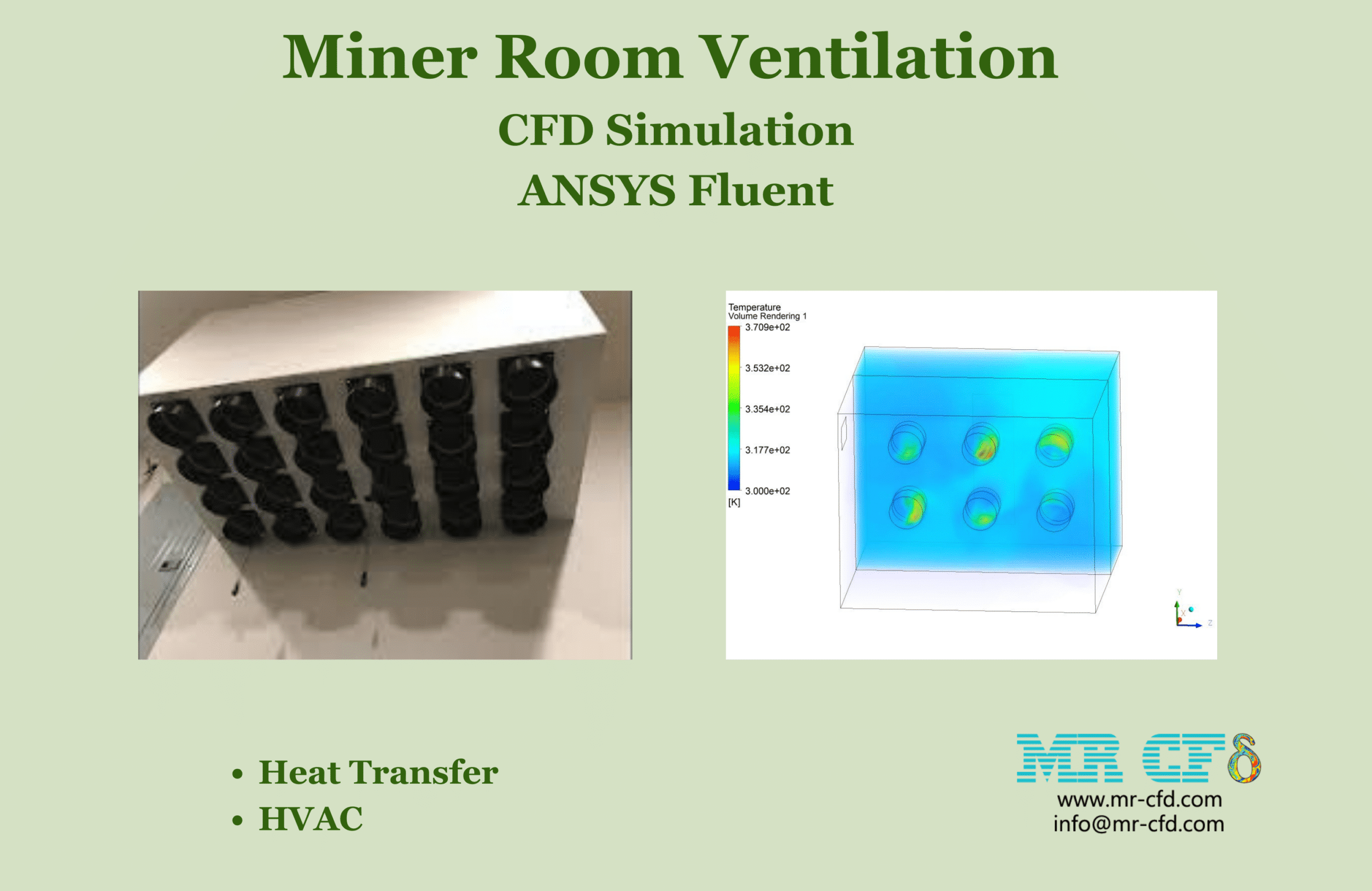
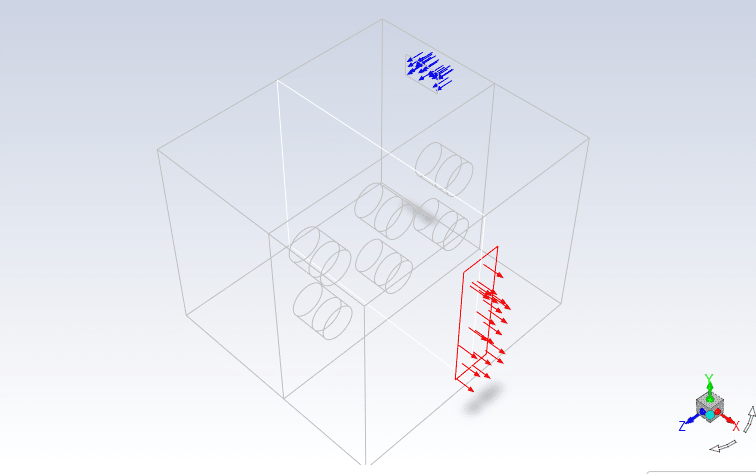

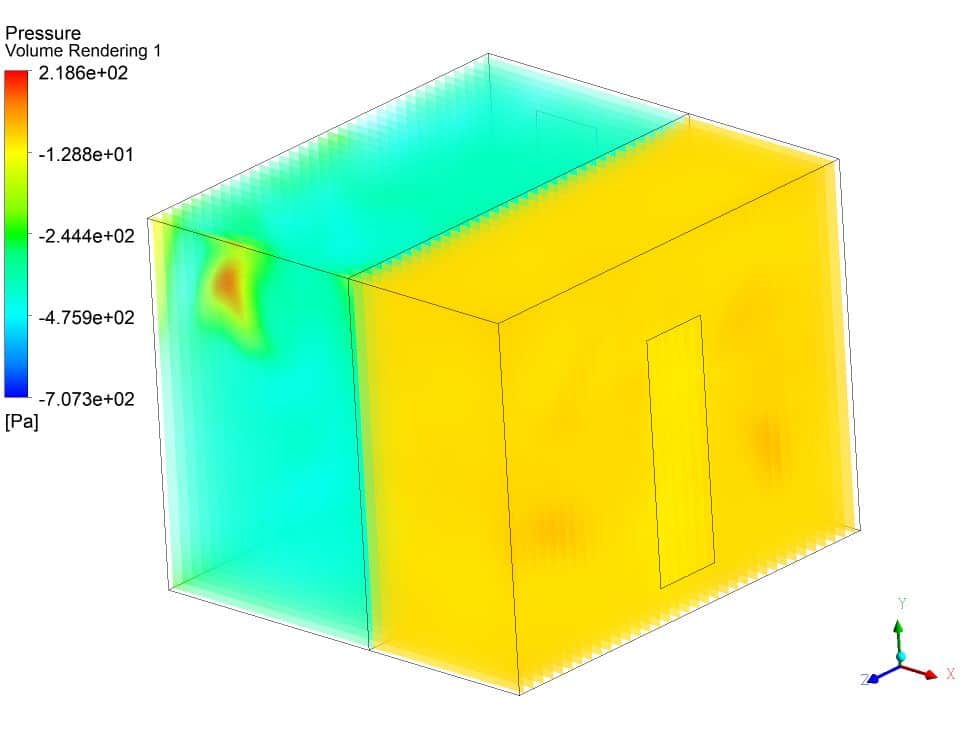
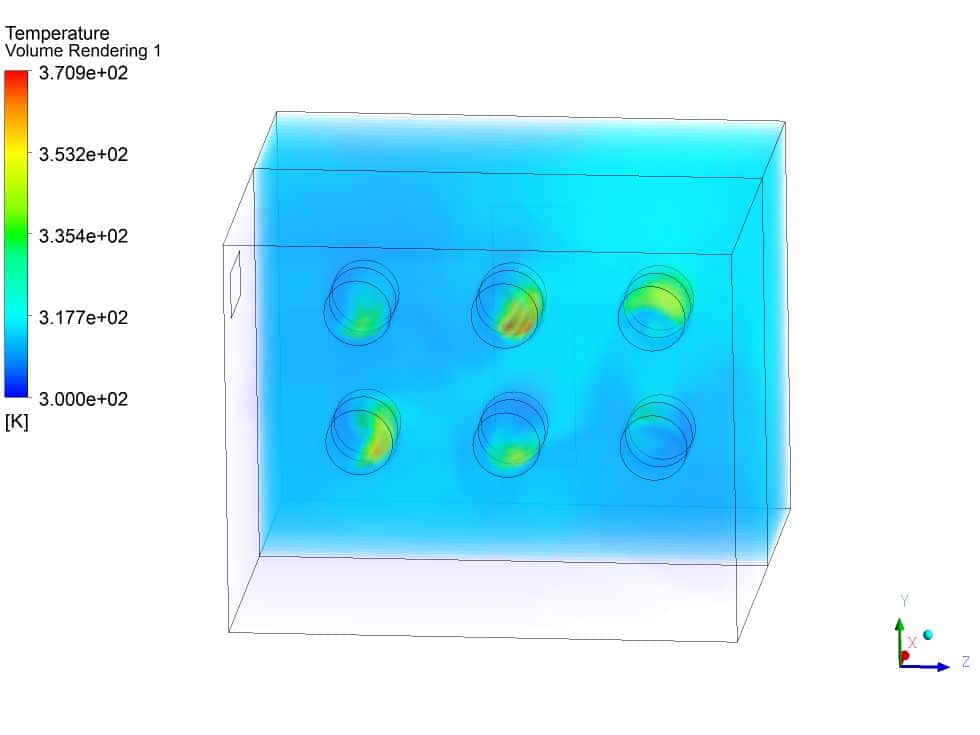

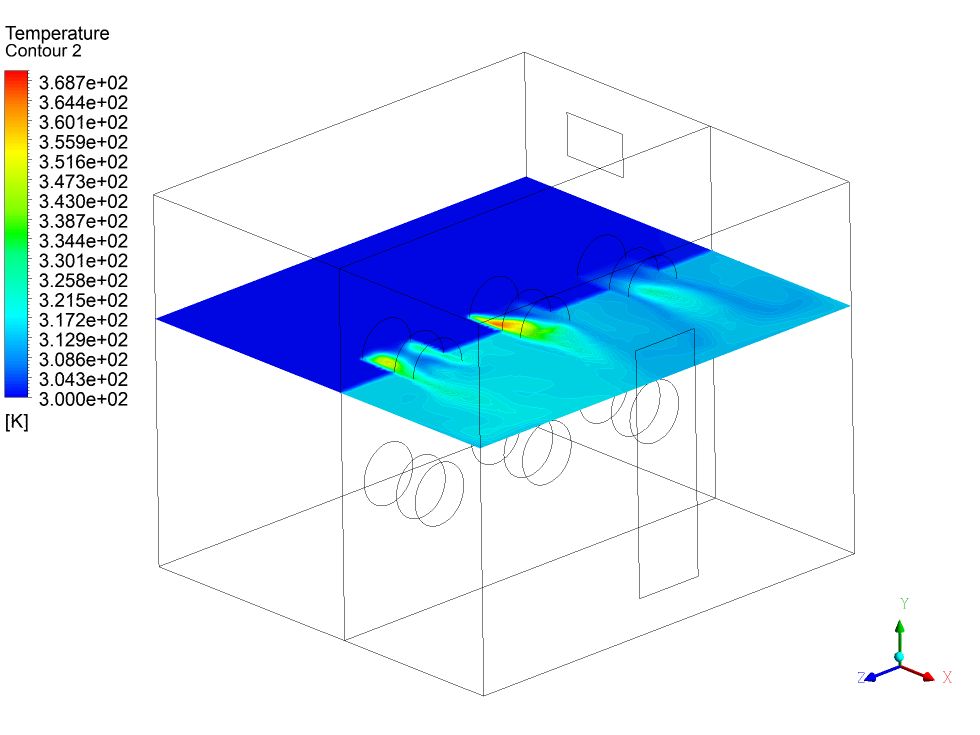
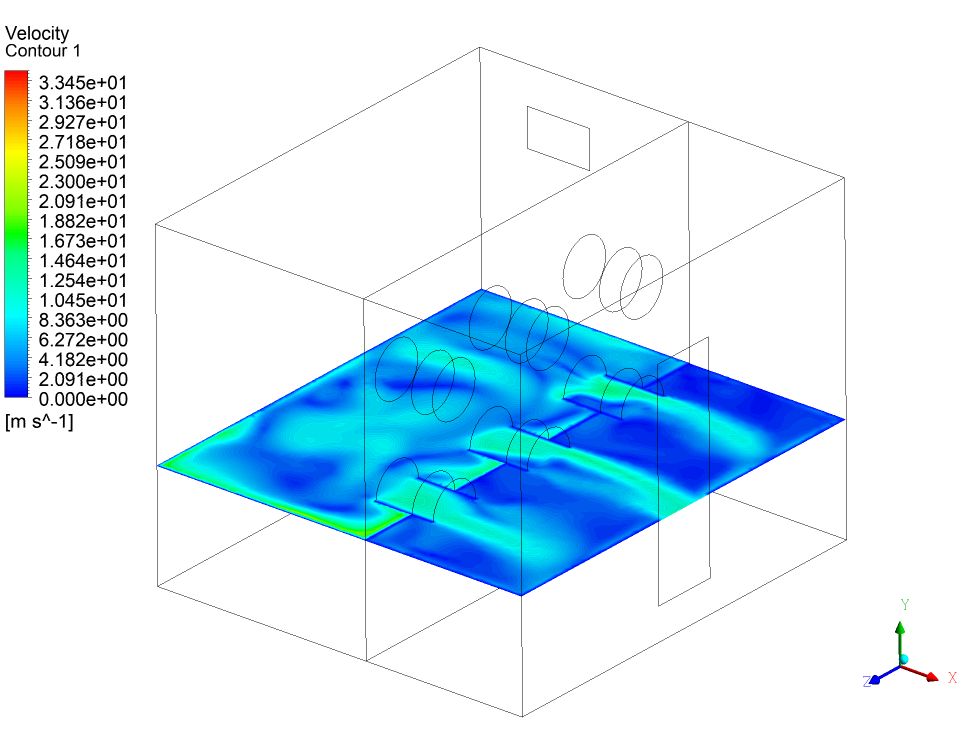
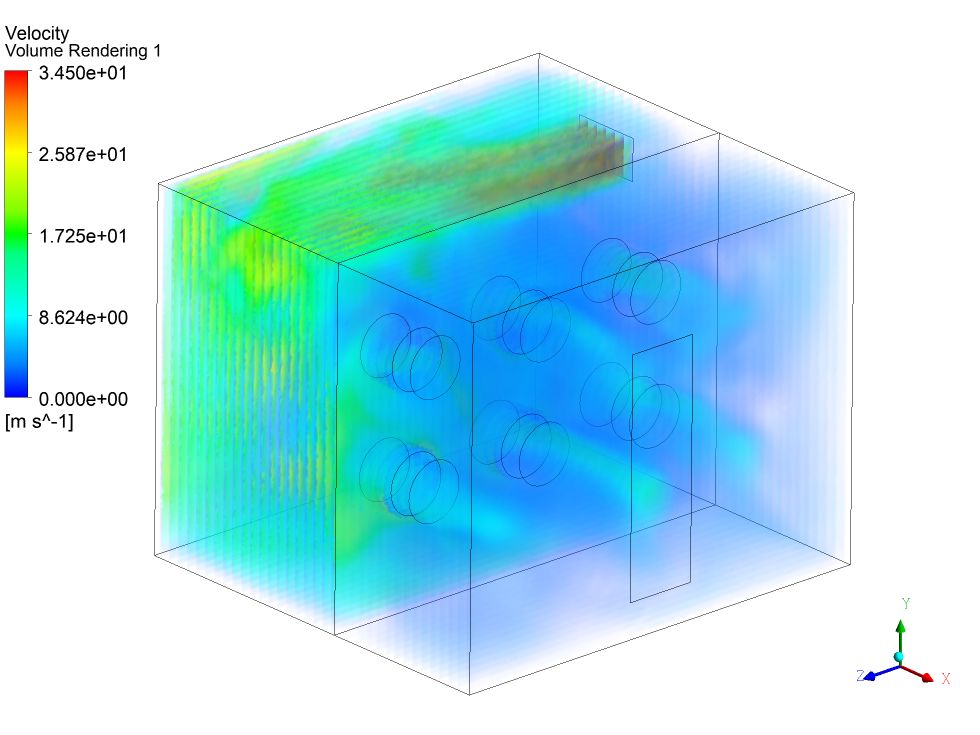
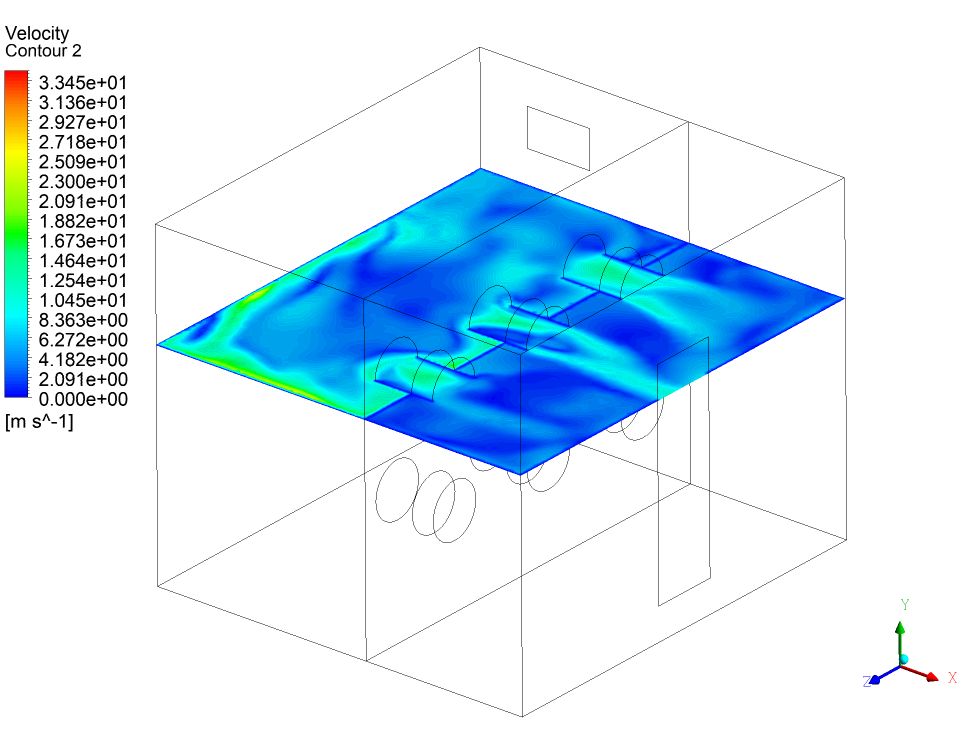

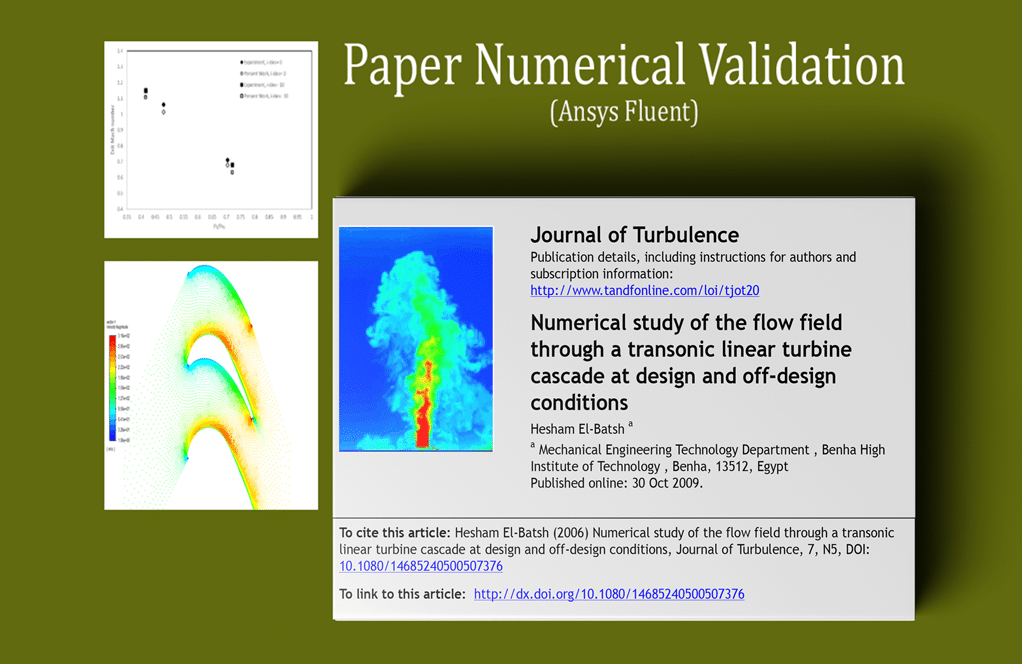


Reviews
There are no reviews yet.